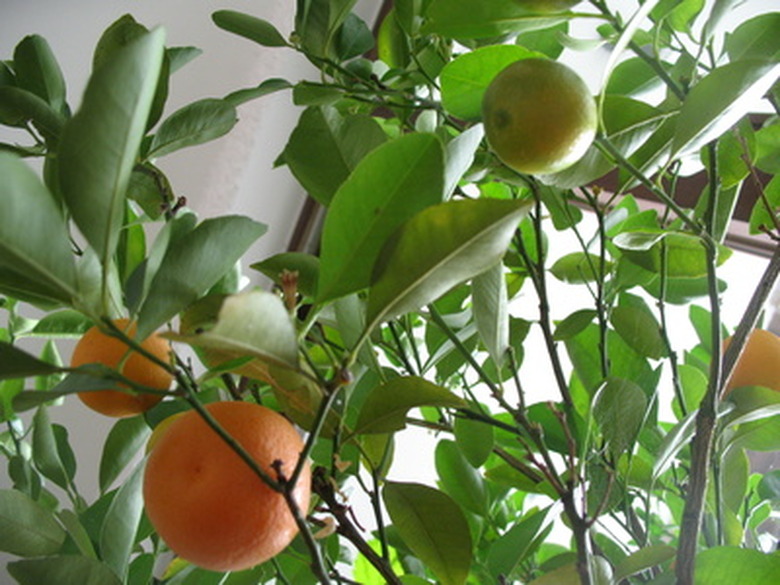Mildew On Citrus Trees
Mildew on citrus trees can cause reduced plant growth and health, limb damage and fruit damage. It can render your fruit inedible, at worst, and make the tree look ugly, at best. Trees can experience many types (and colors) of mildew, so learn what to look for to keep your tree healthy.
Cause
Most mildew on citrus trees appears on the leaves and is caused by a fungal disease. One type of mildew, black mold, indicates an insect problem instead. In order to treat the fungus, you need to determine the appropriate cause, remove the cause from the environment and treat the disease.
Sooty Mold
So-called sooty mold is easily identified by its dark black color. This disease can affect the leaves and fruit of your citrus tree, depending on when it appears. Aphids, whiteflies and other insects cover your tree's leaves and bark, secreting a gooey slime. As the slime mildews it causes the black sooty mold to appear. Texas A & M suggests gardeners control sooty mold on leaves by rinsing them with water or with insecticidal soap. If the fruit is blemished, it's too late by then, notes Texas A & M.
- Mildew on citrus trees can cause reduced plant growth and health, limb damage and fruit damage.
- Trees can experience many types (and colors) of mildew, so learn what to look for to keep your tree healthy.
Colored Mildew
As Purdue University notes, lemon trees can develop blue, green or pink mold on the bark or leaves. These are all subspecies of penicillium. Citrus trees, like most other types of woody plants, can sometimes get powdery mildew. If the leaves of your tree become coated in a white powdery substance, you've got powdery mildew.
Treatment
While you can use insecticidal soap and water to treat insect pests that cause sooty mold, you'll likely need to use chemicals for other types of mildew. If you see only part of your citrus tree with mold on the leaves or branches, prune away that limb. If the problem persists, purchase an appropriate fungicide. Ohio State University Extension recommends those containing triadimefon, triforine or propiconazole for powdery mildew.
- As Purdue University notes, lemon trees can develop blue, green or pink mold on the bark or leaves.
- While you can use insecticidal soap and water to treat insect pests that cause sooty mold, you'll likely need to use chemicals for other types of mildew.
Prevention
Fungus spreads best in warm, wet weather and is more likely to appear in the spring than in summer. Avoid watering your citrus tree's leaves at any time, since this can render them more sensitive to mildew. Ensure the tree is planted in an area where it receives good air circulation, so that air can blow bacteria and fungus through the tree's branches. Keeping the tree watered and fertilized also prevents the spread of disease.
